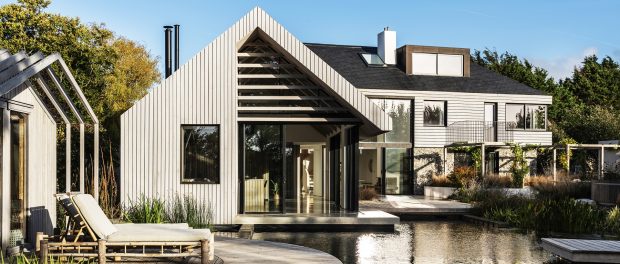Migrating towards bird-friendly buildings

With millions of birds globally dying each year after striking buildings, Leo Pyrah, product manager at Pilkington United Kingdom, discusses the challenge of designing and retrofitting developments to be more bird-friendly.
Last year, Apple’s new California HQ made headlines as employees kept injuring themselves by walking into its full-height glazed windows and doors. Many of us will have found ourselves in similar situations, although hopefully only walking away with a bruised ego and an embarrassing story to tell.
While it’s rarely serious for us, this can be a major hazard for our avian friends. In fact, millions of birds sadly die each year when they fly into glazing in homes, offices, or even bus shelters. It’s a challenging but key conservation issue for the building design and building products sectors to address.
What’s more is that glass is increasingly being used in our built environment thanks to its capacity to let natural light into interior spaces while also controlling interior climates, so we can expect to see the number of birds affected increase steadily in the years ahead.
The public is rightly becoming more conscious of its impact on the planet, with the recent drive to cut plastic straw use to protect sea life being just one example.
In the same way that public attention has prompted action on the issue of single-use plastics from the retail and hospitality sectors, we are beginning to see pressure on developers to tackle the impact of buildings on avian populations.
Toronto flies ahead in response
In partnership with developers, cities are now actively making buildings more bird-friendly. Toronto, for example, which sits on the path of two major avian migration routes, has been recognised as the first Northern American city to address the issue. Increasing public awareness, local political will and desire from developers has led to action to protect birds.
Voluntary bird-friendly building design guidelines were produced for Toronto in 2007, which became law in 2009. These outline requirements for patterned manifestations on glass elevations that are easy for birds to see, and for glass that shows less glare from internal lights to be used. They also stipulate that reflections should be reduced by specifying anti-reflective glazing and recessing it into facades.
Those that have already retrofitted their buildings for compliance claim fatal bird strikes have decreased by more than 90%. While this illustrates what can be achieved with the support of specific legislation, there is a question as to whether developers worldwide have the appetite to adopt similar measures, especially given the added cost this would entail and the impact it would have on building aesthetics, performance and end-user experience.
A dilemma for architects and specifiers
Historically, the energy performance of a building, natural light from windows and aesthetics have each required a trade-off in return for making a development more bird-friendly. For example, designing windows in recesses blocks light from hitting the glass and casting a reflection – which birds can mistake for open space. However, this has to be balanced against natural light exposure for building occupants, which has been linked to increased productivity and overall wellbeing.
On top of impact to occupants, there is also aesthetics and performance of building materials to consider. Applying manifestations to glazing to increase the visibility of windows for birds can detract from the visual appeal glass can offer to a building. While it could seem vain to prioritise aesthetics at the risk of animal welfare, the building design industry is understandably under pressure from clients and the public to deliver attractive, fit-for-primary-purpose developments.
Reflective glass is also often deliberately specified for its aesthetical appeal (a trend that’s particularly popular in the US), for its ability to create privacy for occupants, and for its solar control performance too. However, in the case of the latter, advanced glass that offers both bird-safe and solar control properties is currently in development.
The advancement of bird-safe glass
Specialist architectural bird-safe glass, a product category that’s still in its infancy, has provided a new solution to bird strikes that minimises some of the negative side effects mentioned above.
Some existing products on the market are effective, but they often reduce the light transmission of the glass and the view from inside the building outwards.
We are beginning our journey into this market with a new product, Pilkington AviSafe. Due for launch in summer 2019, Pilkington has worked closely with avian experts to develop a patterned coating that disrupts the reflection as a bird sees it – so instead they see a barrier without the need for manifestations.
The coating and pattern developed is barely visible to humans, especially from the inside, so we look right through the glass more or less undisturbed.
As ‘bird-safe’ products across the industry advance, there should be less of a trade-off between specifying bird friendly glass and other glazing functionality as the coating can be used alongside other glazing technologies for a multi-functional, high-performance solution.
Making the built environment more environmentally responsible
Many architects, specifiers and developers are striving to create buildings that cause less harm to the planet and preventing bird-strikes is one of many routes to achieving this. As products become more advanced, and as our industry becomes more aware of how to tackle the issue, it will become increasingly attractive to conscientious developers.
Unfortunately, preventing the clumsy among us from colliding with our patio doors may be harder to achieve. That may be an issue no feat of technological advancement can solve.




















